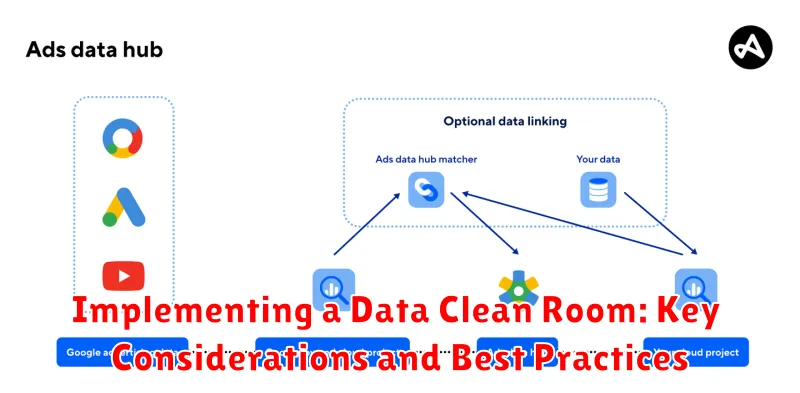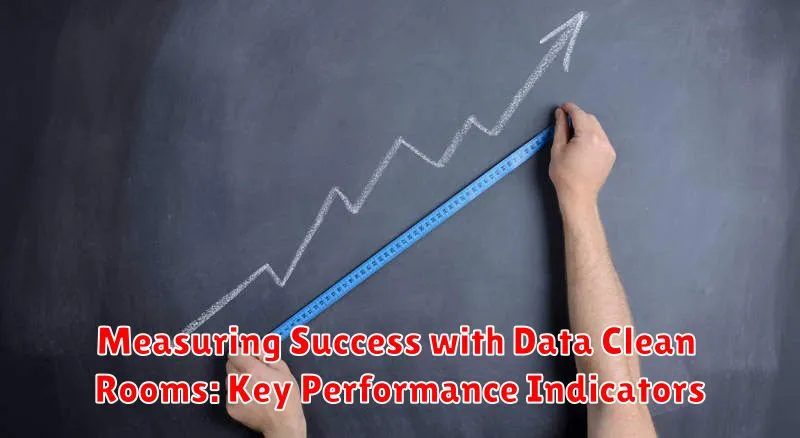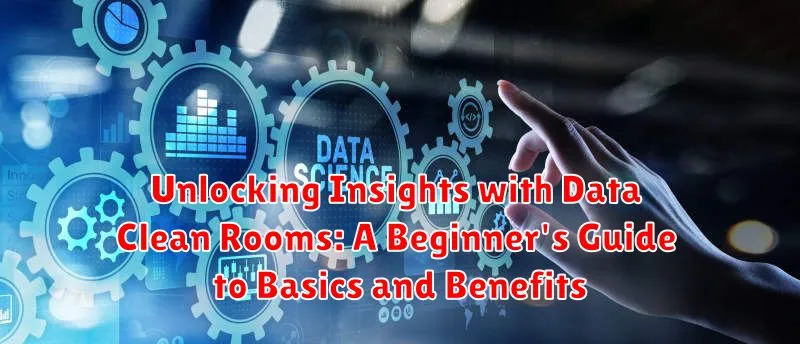Welcome to the world of data clean rooms! In today’s data-driven landscape, understanding and leveraging data is paramount for businesses seeking a competitive edge. However, navigating the complexities of data privacy, data security, and regulatory compliance can be a significant challenge. This guide, “Unlocking Insights with Data Clean Rooms: A Beginner’s Guide to Basics and Benefits,” serves as your introductory resource to demystify data clean rooms and illustrate how they empower organizations to unlock invaluable insights from combined datasets without compromising sensitive information. We will explore the fundamental concepts of these secure environments, detailing how they facilitate collaborative data analysis while adhering to the strictest privacy standards.
This comprehensive guide is designed for beginners and aims to provide a clear and concise overview of data clean rooms. We will delve into the core functionalities of these platforms, explaining how they enable secure data sharing and data collaboration between multiple parties. Learn how businesses across various industries, including marketing, advertising, healthcare, and finance, are using data clean rooms to enhance their decision-making processes, improve data analytics capabilities, and drive business growth. Discover the key benefits of utilizing this technology, from enhanced privacy and security to improved data insights and increased operational efficiency. Join us as we unravel the power of data clean rooms and empower you to harness their potential for your organization.
What is a Data Clean Room? Definition and Core Concepts
A data clean room (DCR) is a secure and privacy-compliant environment where multiple parties can bring their data together for joint analysis. The core principle is to enable collaboration and derive insights without exposing the underlying raw data to each other.
Think of it as a neutral ground for data collaboration. Participants contribute datasets, and pre-defined rules and security measures ensure that sensitive information remains protected. Only aggregated or anonymized results are shared, preventing the direct identification of individual data points.
Key characteristics include:
- Secure environment: Access controls and encryption protect data.
- Privacy-preserving: Techniques like differential privacy and aggregation are employed.
- Collaborative analysis: Multiple parties can run queries and generate reports.
- Controlled data access: Strict rules govern what data can be accessed and how.
The goal is to unlock valuable data-driven insights while adhering to stringent privacy regulations and maintaining data security.
How Data Clean Rooms Work: Securely Matching and Analyzing Data
Data clean rooms enable secure data matching and analysis without directly exposing raw, sensitive data. The process typically involves several key steps:
- Data Ingestion: Participating parties upload their datasets into the clean room environment.
- Data Transformation: Data is often transformed and pseudonymized to protect privacy. This may include hashing, encryption, or aggregation.
- Secure Matching: The clean room uses secure multiparty computation (SMPC) or other privacy-enhancing technologies to match records across different datasets without revealing underlying data values.
- Aggregated Analysis: Once data is matched, aggregated analysis can be performed within the clean room. This analysis is typically governed by pre-defined rules and restrictions.
- Output Reporting: Only aggregated and anonymized results are shared with participating parties, ensuring that individual-level data remains protected.
This secure environment ensures that valuable insights can be derived while adhering to strict privacy regulations.
Key Benefits of Using Data Clean Rooms: Enhanced Privacy and Collaboration
Data clean rooms offer significant advantages, primarily centered around enhanced privacy and secure collaboration.
By allowing organizations to analyze combined datasets without directly sharing raw data, data clean rooms address growing concerns regarding data privacy regulations like GDPR and CCPA.
This enables privacy-compliant data collaboration, allowing multiple parties to contribute data and derive insights without exposing sensitive information. This fosters trust and encourages participation in data-driven initiatives.
The benefits include:
- Improved Data Security: Mitigating the risk of data breaches and unauthorized access.
- Enhanced Collaboration: Enabling secure data sharing for joint analysis and insights.
- Regulatory Compliance: Meeting the stringent requirements of privacy laws.
- Increased Data Value: Unlocking new insights by combining diverse datasets.
Use Cases for Data Clean Rooms: Marketing, Advertising, and Beyond
Data clean rooms are revolutionizing various industries by providing a secure and privacy-compliant environment for data analysis and collaboration. Primarily, they’re gaining traction in marketing and advertising. Marketers can use them to match their first-party data with publisher or partner data without exposing raw user information. This facilitates enhanced ad targeting, campaign measurement, and personalization while adhering to stringent privacy regulations.
Beyond marketing, data clean rooms are applicable in sectors like healthcare, where sensitive patient data can be analyzed collaboratively by researchers and pharmaceutical companies to discover trends and improve patient outcomes. The financial services industry can leverage data clean rooms for fraud detection and risk management by securely combining data from multiple sources. Furthermore, retail businesses can optimize their supply chain and improve customer experience by integrating data from suppliers, distributors, and retailers.
Here’s a short list of potential use cases:
- Cross-channel campaign analysis
- Attribution modeling
- Audience overlap analysis
- Product co-occurrence analysis
Different Types of Data Clean Rooms: Cloud-Based vs. On-Premise
Data Clean Rooms (DCRs) are available in various deployment models, primarily cloud-based and on-premise solutions. Each type offers distinct advantages and considerations regarding infrastructure, scalability, and control.
Cloud-Based Data Clean Rooms
Cloud-based DCRs are hosted and managed by a third-party provider. Scalability is a major advantage, allowing for easy adjustments to storage and compute resources based on demand. These solutions generally offer faster deployment and lower upfront costs. However, organizations must carefully assess the provider’s security protocols and data governance policies.
On-Premise Data Clean Rooms
On-premise DCRs are deployed and managed within an organization’s own infrastructure. This approach provides greater control over data security and compliance, which may be crucial for highly sensitive data. However, on-premise solutions typically require significant upfront investment in hardware, software, and specialized IT personnel. Scalability can also be more challenging to achieve compared to cloud-based options.
The choice between cloud-based and on-premise DCRs depends on factors such as budget, data sensitivity, compliance requirements, and technical expertise.
Implementing a Data Clean Room: Key Considerations and Best Practices

Implementing a Data Clean Room (DCR) requires careful planning and execution. Several key considerations and best practices should be adhered to for a successful deployment. These include defining clear objectives and use cases for the DCR to ensure it aligns with business goals.
Data governance is paramount. Establish clear policies on data access, usage, and security within the clean room environment. This includes defining roles and responsibilities for data providers and data consumers.
Selecting the right technology is also crucial. Consider factors such as scalability, security features, and compatibility with existing infrastructure when choosing a DCR solution. Cloud-based solutions offer flexibility, while on-premise deployments provide greater control.
Furthermore, implement robust monitoring and auditing mechanisms to track data usage and ensure compliance with privacy regulations. Regularly review and update security protocols to address emerging threats. Proper training of personnel is also essential for effective utilization and security maintenance of the DCR.
Privacy and Security in Data Clean Rooms: Protecting Sensitive Information
Data clean rooms (DCRs) are built upon a foundation of robust privacy and security measures. Protecting sensitive information is paramount to their functionality and adoption.
Key Security Features
Several critical security features are implemented in DCRs to safeguard data:
- Data Minimization: Only the necessary data is used for analysis.
- Differential Privacy: Noise is added to the data to prevent re-identification of individuals.
- Access Controls: Strict controls govern who can access and analyze the data within the clean room.
- Encryption: Data is encrypted both in transit and at rest.
- Auditing: Comprehensive audit logs track all activities within the clean room.
Compliance
DCRs are designed to help organizations comply with privacy regulations such as GDPR and CCPA. By providing a secure and controlled environment for data analysis, DCRs enable organizations to gain insights while minimizing the risk of violating privacy laws.
The Future of Data Clean Rooms: Trends and Innovations
The landscape of data clean rooms (DCRs) is rapidly evolving, driven by increasing demands for data privacy, enhanced collaboration, and deeper analytical capabilities. Several key trends are shaping the future of this technology.
Increased Adoption and Standardization: We anticipate wider adoption across various industries, leading to the development of industry-specific standards and best practices for DCR implementation and usage.
Enhanced Interoperability: Future DCRs will focus on seamless integration with other privacy-enhancing technologies (PETs) like federated learning and differential privacy, creating more robust and versatile data ecosystems.
Advanced Analytics and AI Integration: Expect DCRs to incorporate more sophisticated analytics tools, including artificial intelligence (AI) and machine learning (ML), to unlock more granular insights from pooled data while maintaining privacy safeguards.
Focus on User Experience: Improved user interfaces and simplified workflows will make DCRs more accessible to non-technical users, promoting broader participation and data democratization.
Comparing Data Clean Rooms to Other Privacy-Enhancing Technologies
Data clean rooms (DCRs) are often compared to other privacy-enhancing technologies (PETs) due to their shared goal of enabling data analysis while protecting sensitive information. However, it’s crucial to understand their distinct functionalities and use cases.
Here’s a brief comparison:
- Secure Multi-Party Computation (SMPC): SMPC allows multiple parties to jointly compute a function over their private data without revealing the data itself. While DCRs also facilitate collaborative analysis, they typically involve a more controlled environment and pre-defined rules regarding data access and usage.
- Differential Privacy: Differential privacy adds noise to data to prevent the identification of individual records. DCRs, conversely, often focus on maintaining data accuracy within a secure environment.
- Homomorphic Encryption: This encryption method enables computations on encrypted data without decrypting it. While powerful, homomorphic encryption can be computationally intensive. DCRs offer a more practical solution for many real-world analytical tasks.
In essence, DCRs strike a balance between data utility and privacy, providing a versatile platform for collaborative data analysis in various industries.
Measuring Success with Data Clean Rooms: Key Performance Indicators

Determining the success of a Data Clean Room (DCR) implementation requires establishing clear Key Performance Indicators (KPIs). These metrics provide quantifiable insights into the DCR’s effectiveness in achieving its intended goals.
Here are some crucial KPIs to consider:
- Data Coverage and Match Rates: Measures the percentage of datasets successfully matched and analyzed within the DCR. Higher match rates indicate better data integration.
- Insight Generation: Tracks the number of actionable insights derived from the DCR analysis, demonstrating its value in uncovering hidden patterns.
- Business Impact: Quantifies the tangible benefits resulting from the DCR insights, such as increased revenue, improved marketing campaign performance, or enhanced customer engagement.
- Compliance and Security: Monitors adherence to data privacy regulations and security protocols, ensuring the safe and ethical use of sensitive information.
- User Adoption and Satisfaction: Gauges the level of engagement and satisfaction among users of the DCR, reflecting its usability and relevance.
Regularly monitoring and analyzing these KPIs allows organizations to optimize their DCR strategies and maximize their return on investment.

